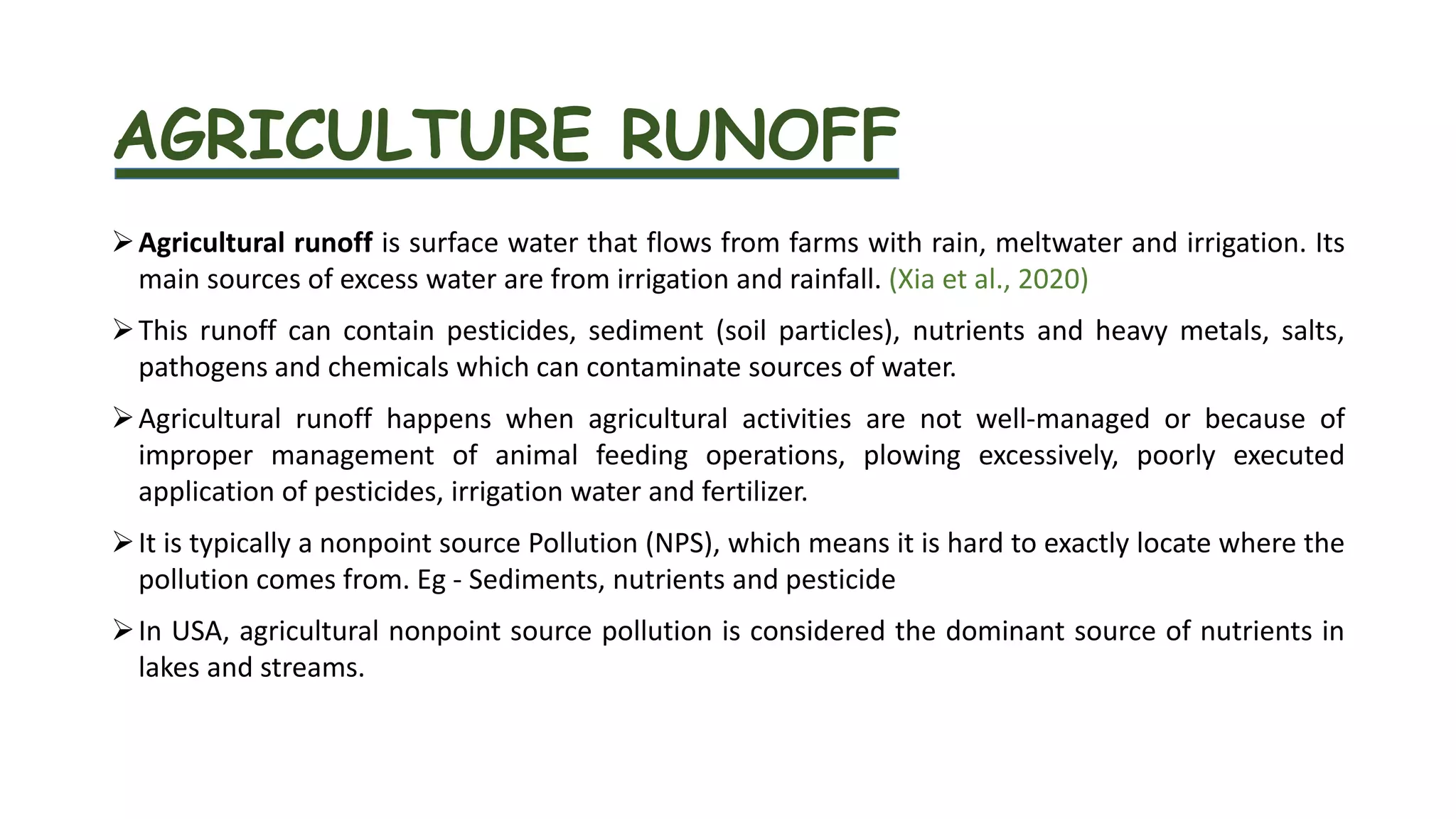Agricultural runoff contains various pollutants like nutrients, pesticides, sediments, salts, pathogens, and metals that can contaminate water sources and threaten biodiversity. When excess nutrients enter aquatic systems, it causes eutrophication which results in harmful algal blooms, depletion of oxygen, and formation of dead zones. Toxic pesticides like DDT can accumulate in organisms and biomagnify up the food chain, negatively impacting wildlife. Sedimentation from runoff buries habitats. Agricultural runoff has significantly degraded ecosystems like lakes and coral reefs worldwide by reducing biodiversity. Proper management of agricultural activities is needed to minimize its impacts on surface and groundwater quality.





































